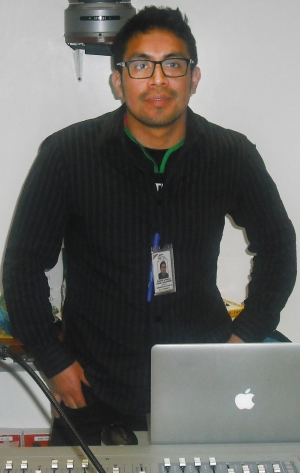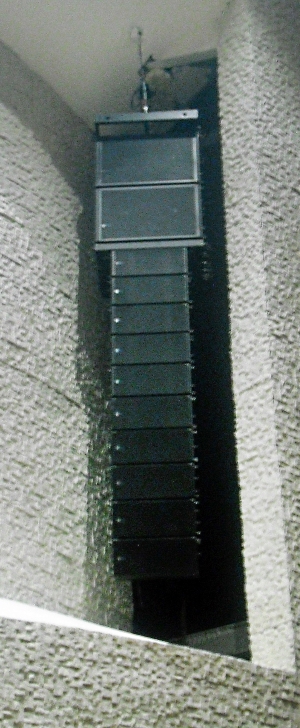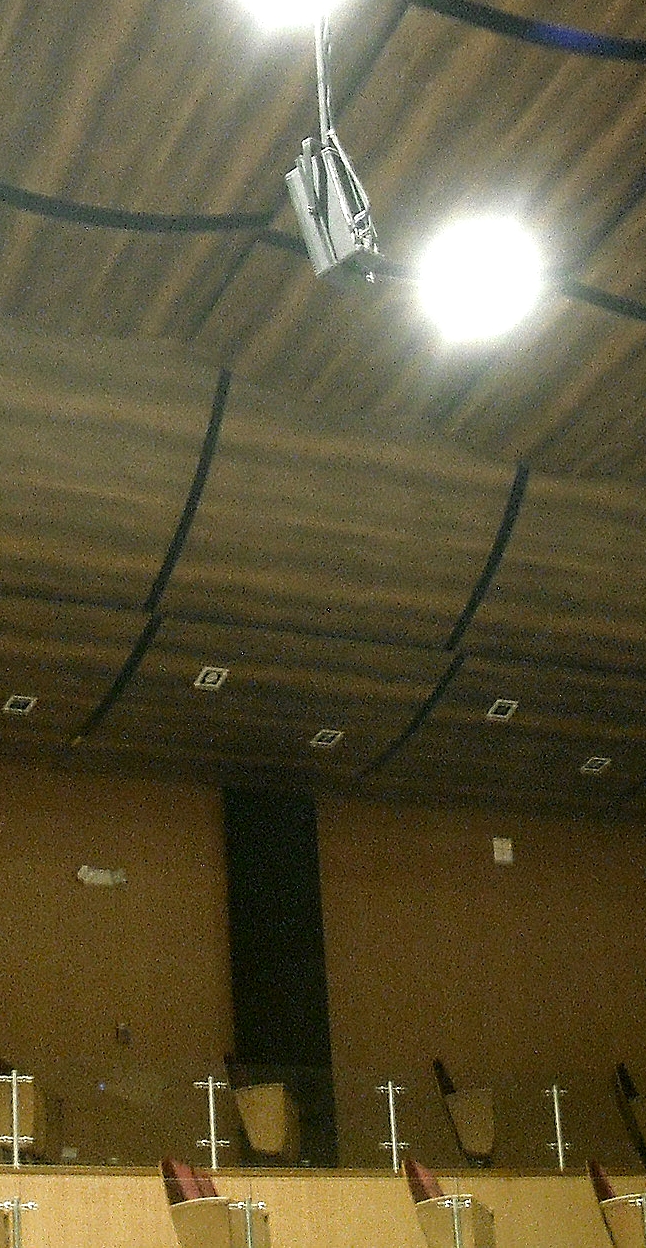“The symphony is playing tonight at Teatro Benjamín Carrión; you should go,” music professor Roque Pineda advised me and my companion Eva while visiting with him at the National University in the city of Loja during a recent journey to Ecuador.
Even though Loja is known as the music capital of the nation that’s located in northwestern South America, we were surprised by our first glimpse of this elegant facility and even more impressed by the quality of the theatre space and its sound reinforcement system – and how it has been integrated into the architectural design.
A metropolis of approximately 185,000, Loja is progressive even by Ecuadorian standards, with an electrical grid powered by wind generators towering in the passes of a mountain range to the west, a public transportation system that appears comprehensive and timely, and much more.
Two universities are centered there, along with a prestigious music conservatory. Now let’s delve into the design process for this new theatre and how those decisions were made.
Premier Setting
Teatro Benjamin Carrion comfortably seats 900 patrons within its sloped main floor and side balconies. Sight lines are clear to the stage from all seats, and the centrally located audio booth is low profile to avoid blocking the view.
Beautiful light-toned stonework on the side walls is complemented with natural wood paneling along the balcony walls and rear of the auditorium, framing the suspended lighting and video booth. The deep, wide stage features a motorized orchestra pit and a custom-designed orchestra shell with moveable panels and curved ceiling elements.

The theatre itself is only a part of the facility, which also has an elegant and spacious lobby entrance and exposition area, with wide, flowing stairways leading to the auditorium seating areas. The structure provides space and facilities to house the Loja Symphony, along with meeting rooms and a restaurant. According to front of house engineer Daniel Duarte, “The concept was that this facility was to be the premier performing arts center in all of Ecuador.”
Named for Manuel Benjamín Carrión Mora, an Ecuadorian writer, diplomat and cultural promoter, the location celebrated its grand opening in mid-November, 2016, inaugurated by the country’s former president, Rafael Correa, as part of an 11-day festival that served as an introduction to the city’s residents, along with audiences and performers from throughout the country. Admission to concerts and other events is free to the public.
The planning phase for the project spanned five years. Numerous studies and teams of consultants were involved in the project, with the overarching goal being to create an optimum blend of architectural design and versatility for the presentation of performing arts. The acoustic environment and selection of the sound reinforcement system was a central part of the process with Duarte stating that, “The design considered two important elements – the building’s acoustics and the sound technology and equipment.”
Chief architect Maria Isabel Aguilar Montano led a team of architects and consultants through the design phase, bringing in Sonotec Ecuador for the sound system design and installation, as well as the lighting, video, and recording systems. According to Duarte, the design teams for the building and the audio and related systems worked closely together throughout, adding that “An engineering group came from Mexico to approve the acoustic design and how the system worked with the architecture.” The total project was built with a budget of $24 million.
Custom Workmanship
The decision was made early in the process that the audio equipment would be on par with the architectural elements, befitting a world-class performing arts center.

Thus the system incorporates an Avid console, DPA microphones, Sennheiser wireless systems, and Meyer Sound line arrays – quite a step up in both audio quality and price compared with the equipment I’ve seen while traveling quite a few Central American countries.
(Although as an aside, I noted several other premium brands at other venues in Ecuador, such as loudspeakers from leading manufacturers such as d&b audiotechnik, JBL Professional, RCF and QSC, microphones from Shure and beyerdynamic, and amplifiers from Crown and Crest Audio.)
Duarte spends his days in front of an Avid VENUE Profile console that’s housed in a low-profile tech booth located at the front of the second tier of seating, about 10 rows back from the stage. The compact 24-fader console has 96 inputs and 16 outputs – enough to cover the facility’s most complex productions. Concealed connections run from the console to the Venue FOH rack and patch bay that’s placed behind the stage. A second Avid console, for monitors and recording, is also backstage.
The FOH mix is distributed to the flown line arrays and fill loudspeakers via a Meyer Sound Galileo loudspeaker management system. Left and right arrays each consist of 10 self-powered MINA modules below a pair of self-powered 500-HP subwoofers, flown within soffits designed into the side-stage walls.
MINA is a compact platform, with each module measuring just a bit over 18 inches wide and 8 inches high, housing two 6.5-inch cones and a 3-inch compression driver feeding a 100-degree horizontal constant-directivity horn.

One of the first things I noticed upon entering the theatre is that the line arrays are custom-fitted into these stonework soffits rather than hanging free at side stage. This exact fit speaks to the integration of the architectural and audio design, and confirms what I was told – that the particular loudspeaker system and configuration was selected before the auditorium was constructed.
For the balcony seating area that runs along both side walls above the main floor, three self-powered UPA-1 (2-way, 12-inch) loudspeakers per side are flown at intervals along its length, also controlled with appropriate delay via Galileo. Four more UPA-1s handle front fill, each placed within a screened cavity below the lip of the stage and covering the front rows of the center, left, and right seating areas.
The microphone complement consists of a variety of DPA handheld and miniature models. The handhelds are the convertible d:facto model, which can be used either as a complete mic or as a capsule on a variety of wireless transmitters, the latter being the case with the transmitters for the venue’s four Sennheiser ew-Series wireless systems. A variety of omni and directional mics round out the selection, including d:screet 4060 and 4061 lavaliers, d:screet 4099s for instruments, and a set of d:fine headsets.















